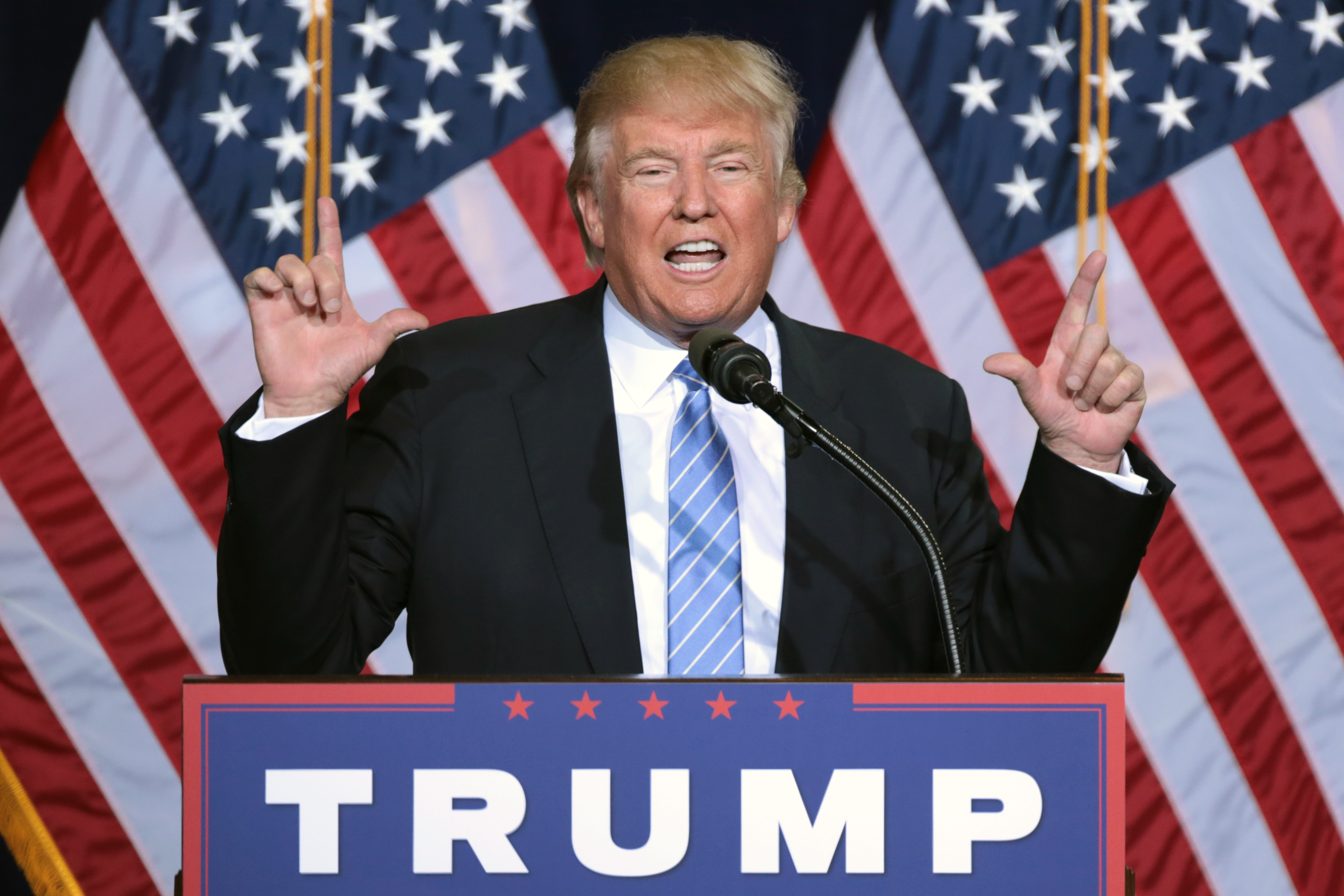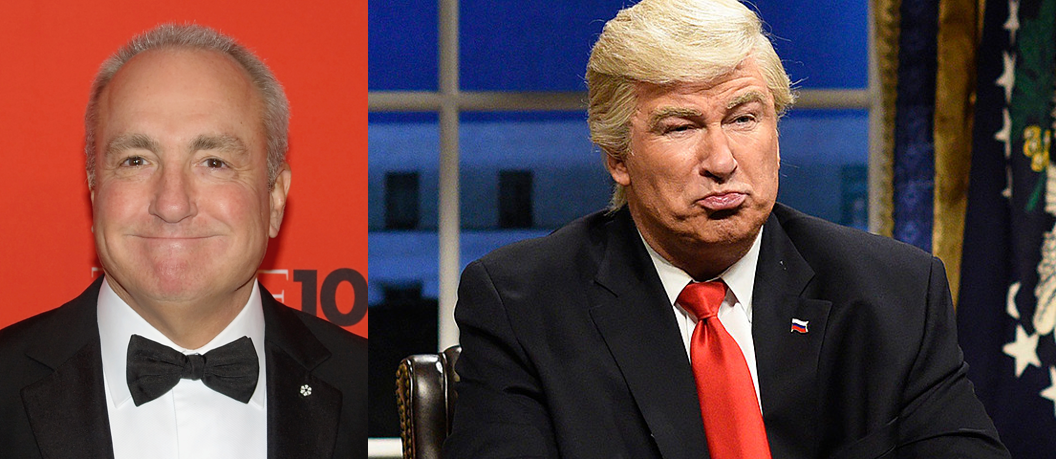
Something fascinating is happening throughout the media and entertainment industry. Donald Trump is warping and changing the culture and consumer sensibilities, forcing personalities of all stripes to make decisions about the direction and tone of their art and craft. We’ve discussed the “Trump Effect” in this blog for months, but most recently in predicting how news/talk and public radio stations are benefitting in the ratings because of the firehose of hot, breaking news stories, and the audience’s interest in the new administration.
To capitalize on this trend, WNYC initiated a new nightly talk show – “Indivisible” – that will air throughout the first 100 days of the Trump Administration. On the parody front, “Saturday Night Live” has enjoyed new currency over the last year with its weekly sendups of the political landscape.
But throughout this long cycle that shows no signs of abating, many other media brands and personalities have faced difficult choices, revolving around whether to jump into the fray or stay as far away as possible.
Personality consultant extraordinaire, Randy Lane, recently published a strong post – “Ten Morning Shows Talk Trump” – chronicling different approaches revolving around whether personalities are playing the “Trump card” or are taking a pass. It goes to the heart of those difficult calls that shows, stations, and brands have to make.
Not surprisingly, strategies and treatments run the gamut. From Paul Castronovo at Big 105.9 who’s all in, to KDWB’s Dave Ryan who’s created a “Trump-free zone,” shows are struggling to figure out the best way to deal with Trump in this powder keg political environment. Others are skirting the daily political controversy by airing late night TV monologues. In that way, the Trump topic gets covered, but it’s always easy to shift the emphasis (or blame) back on guys like Colbert and Fallon.

Speaking of which, a similar struggle is actually playing out on late night TV where the debate over pointed presidential satire versus pure escape is a hot topic.
Stephen Colbert’s “Late Show” got off to a rough start when it first debuted on CBS in 2015. Last summer, former “Morning Joe” showrunner, Chris Licht, took over and began to change the show’s emphasis and tone. (We blogged about it here.) In the ensuing months, Colbert has found his voice, offering up slashing and often hilarious attacks on Trump. Fallon, in the meantime, is now conflicted in his effort to balance escape and entertainment with the reality of current events.
Now the people have spoken, with Colbert leading Fallon in the all-important rating wars. And that has reportedly put pressure on “The Tonight Show” host to get more political.

As mentioned above, there’s never been a debate about how to approach Trump on “Saturday Night Live.” Lorne Michaels – the guy who has guided the show from its beginnings in the ’70s – has employed a simple philosophy about how to approach ongoing controversies like the Trump presidency:
“If you’re not about what people are thinking about that week, then I think you don’t have any relevance.”
For “SNL,” it’s not negotiable. The show doesn’t work unless it’s on the cutting edge of what’s happening now. And using key celebrities as playing real-life characters only serves to ramp up interest in the show. It’s as if audiences are waiting for Saturday nights to see how “SNL” treats the previous week’s events.
For other brands and personalities trying to find its answers, the heart of the issue goes directly to the existential Clayton Christensen question that we often ask in this blog and pose to our clients:
What jobs are listeners hiring your show to do?
Know that, and decision-making becomes less complicated and mysterious. Sadly, many shows – and even the radio stations they represent – aren’t exactly in-touch with their brand essence. At this wild and crazy moment in time, the answers are there, but it requires investigation to suss them out. Focus groups, web surveys, and other tools can reveal a lot about the ethos, tolerance, and expectations of the audience, as well as what they expect from stations and their personalities.
That brings us to this important reminder from Randy Lane for radio’s DJs, hosts, and shows:
“Whatever you decide, stay true to your show’s brand.”
And finally, something that I think about a great deal when I hear shows attempting to pull off political humor, especially during this high-pitched, polarizing point in time:
If you’re going to get into the political fray, it better damn well be great.
Those late night shows, as well as “SNL,” have writers and resources, not to mention hosts who are seasoned pros – and even they have their moments of doubt, uncertainty, and pain. Clearly, Colbert struggled during his early months, trying to nail down his show’s true purpose. And now Fallon may be facing some of his own demons and challenges as he attempts to reinvigorate his ratings, while not upsetting the more lighthearted tone he is famous for.
When it comes to your station and your personalities, if you’re going to play the Trump game, you have to raise your game and play at the highest possible level. There’s roughly half the audience waiting to vilify and reject you if you don’t employ ample amounts of savvy, smarts, and finesse. And laughter is an important ingredient, too. Trying to make the political landscape funny may look easy on late night talk shows, but the reality is that it carries a high degree of difficultly.
And so maybe a twist on the famous old quote about comedy is appropriate here:
“Dying is easy. Radio is hard.”
- What Is It With Female Robot DJs? - April 30, 2025
- Why “Dance With Those Who Brung You” Should Be Radio’s Operating Philosophy In 2025 - April 29, 2025
- The Exponential Value of Nurturing Radio Superfans - April 28, 2025




“A lotta ways to die, folks!
(Lenny Bruce)
That, too, Jim. I don’t think shoe salesmen face these types of dilemmas. Thanks, Jim.
Fred,
Thanks for bring these points to light: 1) brand relevance trumps Trump and 2) It (Trump content) better be great.
As Imus once said – “if you’re truly funny three times a week, you’re a f***ing genius!” Props to the morning show teams that put in the work. When comparing show prep and production – Radio versus TV – the numbers present a dilemma and challenge for radio talent and management.
The Daily Show requires 22 minutes of pre recorded content per episode, is taped with a live audience, and credits 12 or more writers per episode (that had all day to colaborate). A typical radio morning show will need content for around 20 minutes of talk time an hour or approximately 90 minutes of content per day, performed live with no immediate audience response to gauge effect.
A typical result: Three jocks laughing at each other’s jokes. Being pressured to produce “Bits” every break or “just be funny” with little or no support isn’t a sustainable model in an infinite dial media landscape.
If given the choice with today’s tight radio budgets – I’d hire two writers versus building the app that few will use.
Have a great week!
Jim, I think that nails it. Walter Sabo has rightfully complimented personality shows over the years because of just how much content they need to create – every day. But when it comes to the current political discussion, the stakes are so much higher as is “the bar.” Your “typical result” is too common an occurrence. Radio personality shows need to work very hard to stay relevant, competitive, and popular. This is why the “Trump-free zone” is not a bad option for many. Appreciate it, Jim.
I try to keep this in mind when tempted by political events. I am an entertainer and is pissing people off entertaining.
Exactly. Sadly, it’s become nearly impossible to even start a conversation with a tinge of politics without it becoming as awful as Facebook has become. Thanks, Dan.